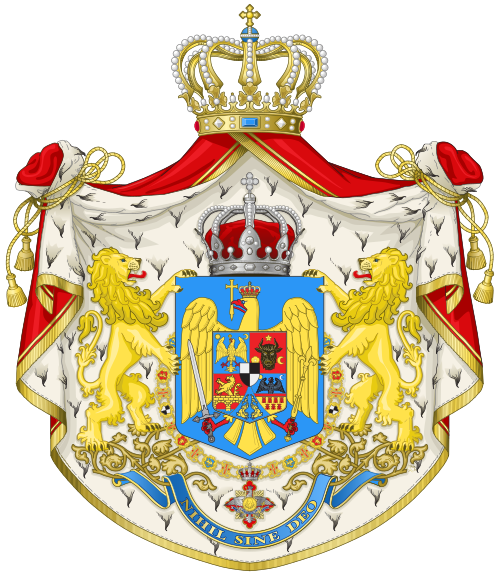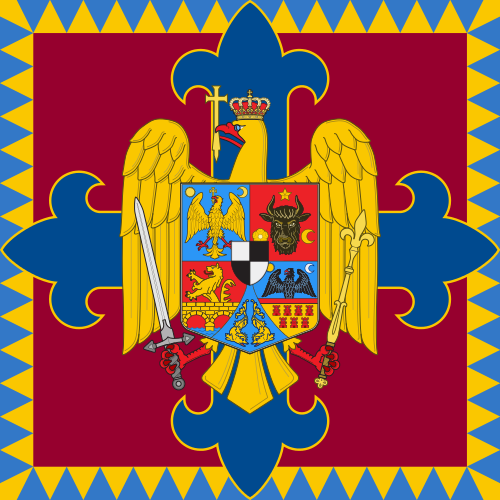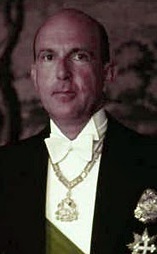Today, March 31, is the sixteenth anniversary of my reception into the Catholic Church, and, as is my wont on this important personal date, I will repost and revise my account of the reasons that led to my decision.
Originally I wrote this piece in my early days of blogging about my reasons for being received. As the years go by I republish it with appropriate emendations and additions.
It was Thursday in the Octave of Easter 2005, and chosen because it enabled friends and relatives who would not have been able to attend at the Easter Vigil to be present and, in one case, to be my sponsor.
I took as my confirmation name Philip - not only the name of the founder of the Oratory and of an Apostle, but also my father's first name and one that I had always liked. So John Robert became John Robert Philip. I subsequently went to the not inconsiderable expense of adding the name by deed poll, so I can insist on officialdom recognising my spiritual journey.
As it happened, by being received when I was, I thereby became one of the very last Catholics to be received into the Church in the pontificate of Pope John Paul II - I feel I squeezed through the door of history in that respect. There are those converts who used to describe themselves as "John Paul II Catholics" or similar phrases. I am, by historic fact and by sympathy a "Benedict XVI Catholic", but, and it is a very important "but", I am a Catholic first - Popes inevitably come and go. That said I consider it an enormous good fortune for the Church and, for me as an individual member of it, to have had His Holiness in the Chair of Peter. His pontificate was a great blessing for the whole church.
As I made my decision to seek reception I codified my ideas into nine categories or groups. St Edmund Campion had his Decem Rationes which he placed so provocatively in St Mary's Church in Oxford in 1581. Mine are more personal perhaps, but, in that they may interest others, here are my Novem Rationes from 2005:
1. I believed all that the Catholic Church believed - so why was I not in full communion with it? I read the Catechism through and found nothing from which to dissent within it.
2. In particular I accepted the claims of the Papacy and its necessity in order to maintain orthodoxy and unity.
3. As a historian I appreciated the Catholic case for the nature of the Church and the Papacy, and the fact of its historical continuity - Walter Ullman's point that the Papacy is the one governing institution that links the Apostolic age to the Atomic age reverberates in my mind.
4. The call to Unity - not only the principal of Ut unum sintbut also the specific claims to expressing that unity with all other Catholics through the Holy See as described by the Fathers.
5. The Catholic Church was seen to act on issues contingent upon Christian belief - Life issues might be the most obvious, but there were others, and with an authentic response being made.
6. I realised that my historic sympathies were with Catholicism - which side would I have been on, or at least believed I would have been on or wanted to be on in say, the Reformation? Well it was clear. My heart lay with the Catholic cause.
7. The state of Anglicanism was not encouraging. For Traditionalist Anglo-Catholics the situation was one of increasing isolation, and the sense that a Third Province would not be granted.
8. Much as I loved my Anglican places of worship - Pusey House and St Thomas in Oxford - I felt that I was called to move on. I was at an age when I still could make a change, but that there was not time to delay. If this was the time, then so be it.
9. I thought that many of my Anglican friends were moving or would move into full communion with Rome. Those friendships, based and rooted in a shared spiritual life, were very important to my own spiritual development, and they were pointing all in the same direction.
Looking back from this point, seven years later, I have never had cause to regret my decision. There is no "seven year itch."
I still endorse those nine sets of ideas.
The last three invite some additional comments.
The Church of England has continued on its way, and has failed to have the generosity to provide for Traditionalist Anglo-Catholics. “Women bishops” have arrived and even if not as divisive as one expected it is because so many Anglo-Catholics have left. The argument that such inclusivity of personnel would lead to a national spiritual revival is seemingly as vacuous as one always thought it would be. What is sad is to see is the decline of the “Vision Glorious” in the Church of England.
Anglicanorum Coetibus has been issued - I pray it will be successful in extending the unity of the Church to others of like faith and mind outside its formal bounds. Since 2011 we have witnessed the establishment of the Ordinariate first in England and more recently in the USA and Australasia. I have been able to help to support those joining it here by acting as a pro-sponsor in two cases, or simply by turning up to support their Masses, and, of course, by praying for it.
Summorum Pontificum reasserted the right to have traditional forms of the liturgy and it has been followed by a strong and positive response, and that needs to be continued - as has been said what was sacred once is sacred now. What has been achieved there needs to be maintained and defended. The success of groups such as FSSP and ICKSP shows there is a real and growing demand for traditional liturgy. I have found myself that during “lockdown” I have been increasingly drawn towards EF rather than OF celebrations.
I am still on excellent terms with friends from Pusey House and St Thomas', and I rejoiced at Fr Hunwicke's appointment to the latter in 2007 before he moved into the Ordinariate. It has been good to see all that is happening at both institutions for the wider Catholic cause. It was very good for my humility that they could manage and survive without me! I retain enormously happy memories of my time at both places and at the churches I worshipped at in Yorkshire before I came to Oxford.
Nonetheless I increasingly find it difficult to see why more people in the Anglo-Catholic tradition are not availing themselves of all - and it is so much - that is offered by the Ordinariate. It is all they have ever said they wanted or indeed hoped for - bar, possibly, taking their church buildings with them, and though I can sympathise to a great extent, but not to the exclusion of what ultimately matters.
As to my friends - well, I was the second of our group to make the move, and three more followed in the next eighteen months. In the following years two married couples and their families were received. At the end of last year two other friends from those years made the journey. Four of the men have ordained to the priesthood.
Along the way I have made many other new friends amongst those converting, and I have been made very welcome in my new spiritual home. I am extremely lucky to have the Oratory and also SS Gregory and Augustine and Blackfriars as places in which to worship regularly here in Oxford. The last year has made me more familiar with FSSP and ICKSP churches worldwide - the other day I ‘virtually’ attended Mass in Mexico - and that helps to remind one that the Catholic Church is truly Universal.
As a Catholic I was able to attend the Beatification of John Henry Newman in Birmingham in 2010 which was a great joy. I feel my journey, my Apologia ( were it ever written), owes not a little to his influence and intercession.
Being a Catholic has opened up so many opportunities for worship, devotion and understanding - not to mention contact with so many people and places - that I could never have imagined possible beforehand. There is a new sense of belonging, of that which is dignum et justum, from that time on. What happens in time and space also happens in Eternity. For all of that I have a profound gratitude.
Soon after I was received a friend and I likened the process of conversion and reception not to swimming the Tiber, but to paddling across - when we reached the opposite bank we found friends waiting in the deck-chairs to hand one a towel to dry one's feet and then to hand you a missal or breviary to read as you sat down to watch who would be next to come over.
May St Philip Neri, St John Henry Newman and all the saints continue to pray for me, and for those seeking their home in the Church.
For a bit more background see also my post Ten years ago from 2014.











